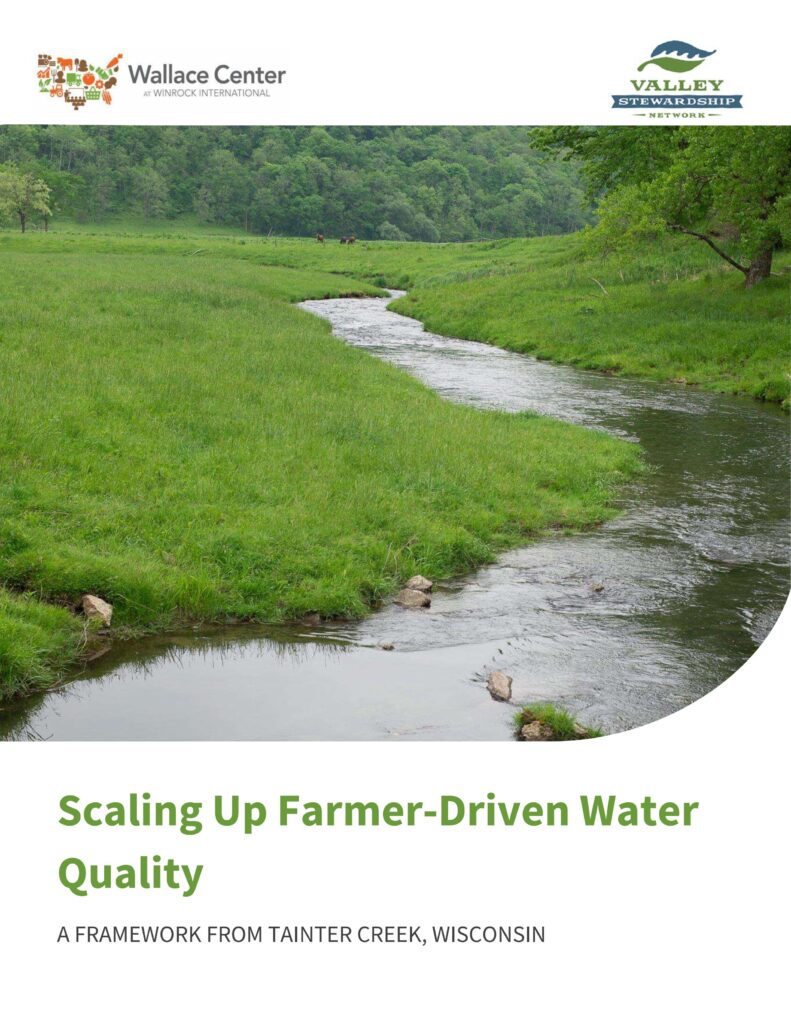
Despite decades of efforts to improve water quality in the Gulf of Mexico, the hypoxic zone continues to threaten marine organisms and coastal communities. Agricultural production using high disturbance tillage, inefficient fertilizer and manure application, and winter fallowing is a leading cause of the nutrient and sediment inputs driving hypoxia in the Gulf.
This report compiles lessons learned from a farmer-focused program designed to concentrate financial resources, technical assistance, water quality monitoring, and decision support tools in a specific watershed to improve water quality. This project, which supported farmers in Tainter Creek, Wisconsin from 2019-2023, was by many metrics a clear success: in just three years, farmers transitioned almost 1,000 highly sensitive acres to regenerative practices, in many cases converting highly erodible cropland to perennial pasture. The project far exceeded its goals to reduce phosphorus loss and erosion in the watershed by 5% from baseline. This report compiles the implementing partners’ recommendations on how similar watershed-scale programs might be structured.
Published in 2024.





